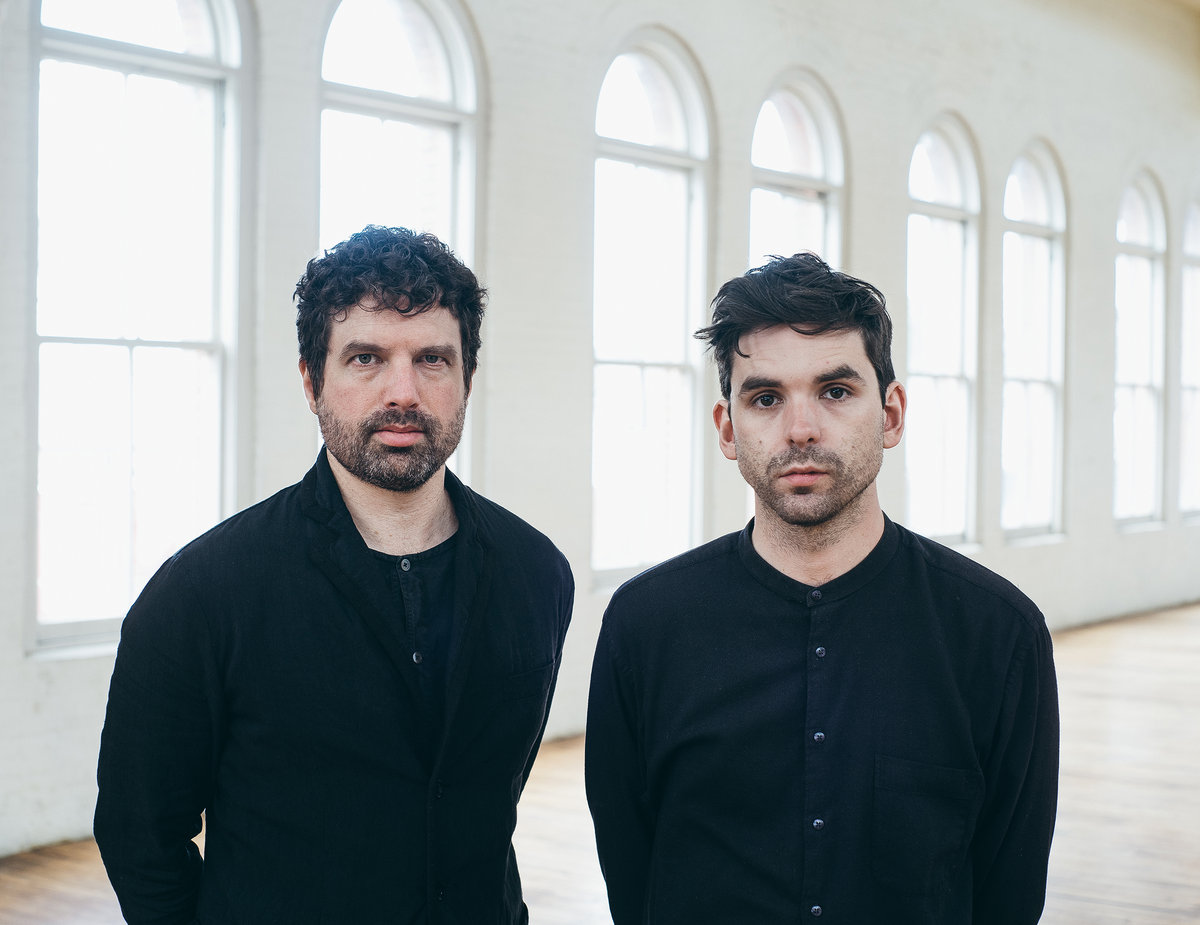Oakland-based guitarist Chuck Johnson was never in the same room as his collaborators, the Portland duo Golden Retriever, during the making of their new album Rain Shadow. Given how fluidly the sounds on the record weave and snake around each other, this fact is nothing short of inspirational. It’s a guidebook on how to make a great ambient album during quarantine.
But Rain Shadow and its trans-West Coast recording process predate the coronavirus pandemic by almost two years. The longtime friends and frequent tourmates began recording in summer 2018, and had the record finished and mixed by summer of last year. Though they went in with no real concept, they eventually settled on a “high-desert ecology” theme, represented by a marvelous stone-golem cover courtesy of Portland artist Blair Saxon-Hill.
Johnson plays pedal steel guitar, an instrument he’s been exploring more and more on recent records after making his name with acoustic guitar instrumentals inspired by John Fahey’s American Primitive style. Golden Retriever performed on their usual instruments: Jonathan Sielaff on bass clarinet, Matt Carlson on synth. The artists took turns both starting and mixing the tracks on Rain Shadow, with the mixer usually being the one to decide when a track was finished.
We caught up with Johnson to ask a few questions about Rain Shadow, the process of working remotely, and the West Coast landscapes that inspired the record’s title and artwork.
48 HILLS Why did you decide to record the album remotely versus in person?
CHUCK JOHNSON It just made sense to each of us. Jonathan and Matt were working from their own individual studios, rather than together which is how they usually work. We sort of formed a trio instead of Golden Retriever doing their thing and me adding to that. So it just made sense for us to pass around the tracks and add our own parts as individuals.
48H How did the tracks come together?
CJ There’s four tracks, and I can’t remember who started which one. The pieces I started were mostly loops of the pedal steel. I would send that to them, and whichever one wanted to respond first would record their take. Then whoever was third had both of those tracks to play around with.
It ended up that a lot of the composition happened in the mixing. The person who did the mixing wasn’t just setting the levels on each individual’s part. They also did quite bit of editing those basic tracks into forms and structures. There are a lot of passages where we’re responding to each other, almost like improvisation, but the overall forms were very much put together in the studio after the fact.

48H How did the “high desert” theme develop?
CJ We started off responding to sounds, so there wasn’t that much of a concept going in. But these tracks took on these really long forms, so they were kind of like monolithic slabs. Then that imagery started to come to mind. High desert tends to have a lot of vegetation and flora and fauna. There’s high desert ecology where [Golden Retriever is] in Oregon as well as in California. So it’s a landscape that we’re familiar with, and it’s easy to put names and images to the music within that framework.
48H Is this your first time making a record remotely?
CJ I would say it is. I’ve done things where people ask me to play on a track on their record, which it just makes sense for me to do from my studio anyway. I played on Jefre Cantu-Ledesma’s record [Tracing Back the Radiance] from the last few months, and I played on Andrew Tuttle’s record [Alexandra] that just came out on Room40.
Marielle [V. Jakobsons, who records with Johnson as Saariselka] and I, even though we live in the same house, we kind of work the same way. She would add her part in her studio, and then I would add my part in my studio and then we would mix together. We were in the same house and we could give each other very quick feedback, but we weren’t playing tracks in the studio at the same time.
48H Did you have any plans to perform this material before the live industry shut down?
CJ Yeah, we had shows set up in the Northwest this July. We had a show in Seattle and one in Portland. It was going to be Golden Retriever, then Saariselka, then a collaborative set. But I don’t know to what degree would we would’ve followed the forms as they are on the record. It would be more of a live improvisation. Those shows were postponed to the fall. Hopefully they’ll actually happen, but who knows.





